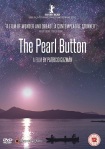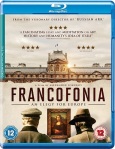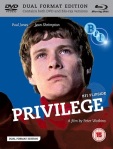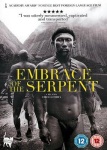I plan to watch less films in 2018 than I did in 2017, and already I’m spending an hour reading when I get home from work, and only putting a film on afterwards. And yet I’m three dozen films in and it’s only the 17 January as I type this, and I’ve a third and fourth post, with another dozen movies already lined up… Oh well.
 Nightfall, James Benning (2011, USA). I found this on Youtube, which seems to be the place to find Benning films, as the Österreichisches Filmmuseum has only released half a dozen or so DVDs of his work. Some of his films are apparently available via Mubi, but I’ve yet to subscribe to it. Meanwhile, there are (often low-quality) copies uploaded to Youtube by various fans, plus Benning’s own Youtube account. Nightfall has nothing to do with Asimov, thankfully, but is 98 minutes of a forest high in the Sierra Nevada Mountains as the sun sets. That’s it. Benning locks off his digital camera, and leaves it running. It’s about as stripped-back Benning as you can get. Unfortunately, there’s an extra-textual element to much of Benning’s work – the juxtapositon of sound and vision, for example, and the reasoning behind it – and watching one of his films on Youtube means you don’t have access to that extra-textual knowledge. You can google for it… and I did. But all I could find claimed that Nightfall was precisely what it presented to be. But, knowing Benning’s work, I suspect there’s more to it than just that. I shall have to look further.
Nightfall, James Benning (2011, USA). I found this on Youtube, which seems to be the place to find Benning films, as the Österreichisches Filmmuseum has only released half a dozen or so DVDs of his work. Some of his films are apparently available via Mubi, but I’ve yet to subscribe to it. Meanwhile, there are (often low-quality) copies uploaded to Youtube by various fans, plus Benning’s own Youtube account. Nightfall has nothing to do with Asimov, thankfully, but is 98 minutes of a forest high in the Sierra Nevada Mountains as the sun sets. That’s it. Benning locks off his digital camera, and leaves it running. It’s about as stripped-back Benning as you can get. Unfortunately, there’s an extra-textual element to much of Benning’s work – the juxtapositon of sound and vision, for example, and the reasoning behind it – and watching one of his films on Youtube means you don’t have access to that extra-textual knowledge. You can google for it… and I did. But all I could find claimed that Nightfall was precisely what it presented to be. But, knowing Benning’s work, I suspect there’s more to it than just that. I shall have to look further.
 Elle, Paul Verhoeven (2016, France). This was a Christmas present. The last I’d heard, Verhoeven was working on some project back in the Netherlands after his successful Black Book, and it seemed pretty certain his Hollywood career was on hiatus as, despite the success of his Hollywood films, I suspect he was too idiosyncratic and the sequels by other hands to his movies had seen diminishing returns. Now, the movies he made in Hollywood were (mostly) top-notch, and while the Starship Troopers live-action franchise (not to be confused with the CGI one) upped the satire with each new installment, it also lowered the audience figures. The Robocop sequels went into a death spiral in terms of both quality and commercial success. And the sequel to Basic Instinct was a Sharon Stone vanity project, and rightfully bombed. (There was also an unofficial sequel to Showgirls, made by a porn actress who had a bit part in the original; it’s absolutely fucking dreadful.) So, Verhoeven: no longer Hollywood. And now he appears to have reinvented himself as French cinema’s successor to Andrzej Żuławski. Because Elle pretty much plays like Verhoeven channelling Żuławski. Which is no bad thing, I hasten to add. Plus, it stars La Huppert. Which is also a good thing – she is probably the best actor currently making films. In Elle, she plays the CEO of a video games company which has a fairly typical testosterone-driven nerd culture. One night, she is raped by a man who breaks into her house. Afterward, she carries on as if nothing had happened – but now she is suspicious of every man in her life: employees, friends, neighbours… The violence is played flat and brutal, which is a Verhoeven trademark, but the way the story pans out feels more Żuławski… although Verhoeven doesn’t have his cast acting as emphatically as Żuławski does. It’s an odd film, a very French drama into which these violent incidents erupt. Which is, I suppose, very Verhoevenesque.
Elle, Paul Verhoeven (2016, France). This was a Christmas present. The last I’d heard, Verhoeven was working on some project back in the Netherlands after his successful Black Book, and it seemed pretty certain his Hollywood career was on hiatus as, despite the success of his Hollywood films, I suspect he was too idiosyncratic and the sequels by other hands to his movies had seen diminishing returns. Now, the movies he made in Hollywood were (mostly) top-notch, and while the Starship Troopers live-action franchise (not to be confused with the CGI one) upped the satire with each new installment, it also lowered the audience figures. The Robocop sequels went into a death spiral in terms of both quality and commercial success. And the sequel to Basic Instinct was a Sharon Stone vanity project, and rightfully bombed. (There was also an unofficial sequel to Showgirls, made by a porn actress who had a bit part in the original; it’s absolutely fucking dreadful.) So, Verhoeven: no longer Hollywood. And now he appears to have reinvented himself as French cinema’s successor to Andrzej Żuławski. Because Elle pretty much plays like Verhoeven channelling Żuławski. Which is no bad thing, I hasten to add. Plus, it stars La Huppert. Which is also a good thing – she is probably the best actor currently making films. In Elle, she plays the CEO of a video games company which has a fairly typical testosterone-driven nerd culture. One night, she is raped by a man who breaks into her house. Afterward, she carries on as if nothing had happened – but now she is suspicious of every man in her life: employees, friends, neighbours… The violence is played flat and brutal, which is a Verhoeven trademark, but the way the story pans out feels more Żuławski… although Verhoeven doesn’t have his cast acting as emphatically as Żuławski does. It’s an odd film, a very French drama into which these violent incidents erupt. Which is, I suppose, very Verhoevenesque.
 Utamaro and His Five Women, Kenji Mizoguchi (1946, Japan). David Tallerman, who likes his Mizoguchi, gave me this box set as he had upgraded his copies of the films it included. (I’ve done the same for him when I’ve upgraded from DVD to Blu-ray.) Utamaro and His Five Women is set during the Edo Period in, er, Edo. The film opens with a samurai art student taking issue with the text on a print of a painting by Utamaro. He tracks him down and challenges him to a duel. Utamaro challenges him to a drawing contest instead… which he wins so handily, the art student joins him as an apprentice. And it’s the new apprentice’s girlfriend who becomes the first of Utamaro’s women, each of whom are combinations of model and muse. The second is a famous courtesan who has him paint on her back for a tattoo artist to use as an outline (as per the box set cover art). Another of his women is a lady’s maid he spots at the beach, diving into the sea among a large group of women and bringing out fish. One of the interesting things about this film – and it’s a good film if you like Japanese historical films – is that it was made under American Occupation immediately following WWII, and the Americans didn’t like the Japanese to make historical films as they thought they were militaristic and nationalistic (according to Wikipedia). But they let Mizoguchi make this.
Utamaro and His Five Women, Kenji Mizoguchi (1946, Japan). David Tallerman, who likes his Mizoguchi, gave me this box set as he had upgraded his copies of the films it included. (I’ve done the same for him when I’ve upgraded from DVD to Blu-ray.) Utamaro and His Five Women is set during the Edo Period in, er, Edo. The film opens with a samurai art student taking issue with the text on a print of a painting by Utamaro. He tracks him down and challenges him to a duel. Utamaro challenges him to a drawing contest instead… which he wins so handily, the art student joins him as an apprentice. And it’s the new apprentice’s girlfriend who becomes the first of Utamaro’s women, each of whom are combinations of model and muse. The second is a famous courtesan who has him paint on her back for a tattoo artist to use as an outline (as per the box set cover art). Another of his women is a lady’s maid he spots at the beach, diving into the sea among a large group of women and bringing out fish. One of the interesting things about this film – and it’s a good film if you like Japanese historical films – is that it was made under American Occupation immediately following WWII, and the Americans didn’t like the Japanese to make historical films as they thought they were militaristic and nationalistic (according to Wikipedia). But they let Mizoguchi make this.
 Mystery, Lou Ye (2012, China). Another Christmas present. Lou is a Sixth Generation director from China, and I’m a big fan of those films by the group I’ve seen. Other members include Jia Zhangke, Wang Xiaoshuai, Zhang Yuan, whose films I’ve seen and much admire; and Lu Chuan and He Jianjun, whose movies I haven’t seen. Lou’s Suzhou River is a thriller/drama with a very clever structure; Mystery, a later film, also uses a non-linear narrative to tell its story. It also has that same documentary style approach to its narrative, which is, I freely admit, one of the real draws of Sixth Generation films. The movie opens with a young woman wandering out into a road and being hit by one of two racing sportcars. Except it may not have been an accident, as she appears to have been fatally assaulted beforehand. Lu Jie makes friends with Sang Qi at a playground where both their kids play. Sang is convinced her husband is having an affair and asks Lu to meet her at a coffee-shop to discuss the advisability of hiring a private detective. But it turns out the coffee shop overlooks the hotel where Sang’s husband meets his mistress. Except… Lu sees her own husband entering the hotel with a young woman. So Lu investigates, and discovers that Sang is also her husband’s mistress and Sang’s young son was fathered by him… You have to keep your wits about you to follow this, although the way the story is presented is deceptively simple. It’s the flashbacks, you see. The situation is complicated, and only revealed piecemeal. Definitely worth seeing.
Mystery, Lou Ye (2012, China). Another Christmas present. Lou is a Sixth Generation director from China, and I’m a big fan of those films by the group I’ve seen. Other members include Jia Zhangke, Wang Xiaoshuai, Zhang Yuan, whose films I’ve seen and much admire; and Lu Chuan and He Jianjun, whose movies I haven’t seen. Lou’s Suzhou River is a thriller/drama with a very clever structure; Mystery, a later film, also uses a non-linear narrative to tell its story. It also has that same documentary style approach to its narrative, which is, I freely admit, one of the real draws of Sixth Generation films. The movie opens with a young woman wandering out into a road and being hit by one of two racing sportcars. Except it may not have been an accident, as she appears to have been fatally assaulted beforehand. Lu Jie makes friends with Sang Qi at a playground where both their kids play. Sang is convinced her husband is having an affair and asks Lu to meet her at a coffee-shop to discuss the advisability of hiring a private detective. But it turns out the coffee shop overlooks the hotel where Sang’s husband meets his mistress. Except… Lu sees her own husband entering the hotel with a young woman. So Lu investigates, and discovers that Sang is also her husband’s mistress and Sang’s young son was fathered by him… You have to keep your wits about you to follow this, although the way the story is presented is deceptively simple. It’s the flashbacks, you see. The situation is complicated, and only revealed piecemeal. Definitely worth seeing.
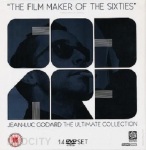 Notre musique, Jean-Luc Godard (2004, France). I’m almost done with this Godard box set, and I’m really glad I bought it. These are films to watch again and again. Godard’s films have never been exactly traditional. Even in his early Nouvelle Vague movies, he played around with narrative forms. Later, he experimented even further. And continues to do so. Notre musique is from Godard’s phase when he mixed fact and fiction, and often played the protagonist himself. After an opening non-narrative section of documentary war footage, the film presents Godard waiting at an airport prior to flying to an arts conference in Sarajevo. He meets a man who will be an interpreter at the conference, French, but originally Israeli, whose niece will also be at the conference. Godard is interviewed by an Israeli journalist, who later interviews Mahmoud Darwish. Both interviews concern Israeli-Palestinian relations. For all his cleverness and cinimatic tricksiness, Godard was never especially subtle. His films are always about something, and if it’s not that which drives the narrative, then you can be sure the characters will discuss it a number times during the movie. Some of his films in fact are little more than discussions among members of the cast. In order to make a point, Godard not only uses language, ie, the spoken word, but also the language of narrative, and even the language of cinema. The epitome of this being, of course, his film Goodbye to Language (see here). (Although I prefer his Film Socialisme (see here), which is similar.) It’s not necessary to agree with Godard’s argument to appreciate his films, but then I don’t think he expects his films to be persuasive per se, more that they’re presented as arguments and their chief purpose is to provoke discussion (but from a sincere position). Anyway, this is by no means Godard’s best film of this sort, nor his most intriguing; but it certainly bears rewatching.
Notre musique, Jean-Luc Godard (2004, France). I’m almost done with this Godard box set, and I’m really glad I bought it. These are films to watch again and again. Godard’s films have never been exactly traditional. Even in his early Nouvelle Vague movies, he played around with narrative forms. Later, he experimented even further. And continues to do so. Notre musique is from Godard’s phase when he mixed fact and fiction, and often played the protagonist himself. After an opening non-narrative section of documentary war footage, the film presents Godard waiting at an airport prior to flying to an arts conference in Sarajevo. He meets a man who will be an interpreter at the conference, French, but originally Israeli, whose niece will also be at the conference. Godard is interviewed by an Israeli journalist, who later interviews Mahmoud Darwish. Both interviews concern Israeli-Palestinian relations. For all his cleverness and cinimatic tricksiness, Godard was never especially subtle. His films are always about something, and if it’s not that which drives the narrative, then you can be sure the characters will discuss it a number times during the movie. Some of his films in fact are little more than discussions among members of the cast. In order to make a point, Godard not only uses language, ie, the spoken word, but also the language of narrative, and even the language of cinema. The epitome of this being, of course, his film Goodbye to Language (see here). (Although I prefer his Film Socialisme (see here), which is similar.) It’s not necessary to agree with Godard’s argument to appreciate his films, but then I don’t think he expects his films to be persuasive per se, more that they’re presented as arguments and their chief purpose is to provoke discussion (but from a sincere position). Anyway, this is by no means Godard’s best film of this sort, nor his most intriguing; but it certainly bears rewatching.
 Emperor, Peter Webber (2012, USA). My mother lent me this one. I’ve watch a film about General MacArthur and Emperor Hirohito before, but it was Sokurov’s The Sun (see here), which could not be more different to this US take on the same historical events. Emperor is told from the point of view of Brigadier-General Bonner Fellers (a real person, like everyone in this film), who was a member of MacArthur’s staff and tasked with discovering Hirohito’s complicity in declaring war on the US. Before the war, Fellers had been in a relationship with a Japanese woman studying in the US, but she had returned home hurriedly for family reasons. He followed her back to Japan, weathered anti-Western sentiment from newly-militarised Japanese society, and met her father, a decorated general. As a Japanist, he’s a good choice to investigate Hirohito, although he did abuse his position during the war so that his girlfriend’s town was avoided by US Army Air Force bombers. MacArthur, meanwhile, is more concerned about using his occupation of Japan as a stepping-stone to the US presidency. To that end, he runs roughshod over Japanese imperial protocol. I happen to think humans are not gods, divine right is a con, and anyone who thinks royalty is any way different to anyone else is stupid. Despite that, Emperor was based on historical events and, as far as I can tell from some quick online research, quite accurate. Okay, Tommy Lee Jones somewhat overwhelmed MacArthur, but the remaining cast were, I guess, sufficiently unknown to me they could be seen as the historical characters they played. The CGI showing a devastated Japan was quite effective but, to be honest, the whole felt more worthy than it felt notable.
Emperor, Peter Webber (2012, USA). My mother lent me this one. I’ve watch a film about General MacArthur and Emperor Hirohito before, but it was Sokurov’s The Sun (see here), which could not be more different to this US take on the same historical events. Emperor is told from the point of view of Brigadier-General Bonner Fellers (a real person, like everyone in this film), who was a member of MacArthur’s staff and tasked with discovering Hirohito’s complicity in declaring war on the US. Before the war, Fellers had been in a relationship with a Japanese woman studying in the US, but she had returned home hurriedly for family reasons. He followed her back to Japan, weathered anti-Western sentiment from newly-militarised Japanese society, and met her father, a decorated general. As a Japanist, he’s a good choice to investigate Hirohito, although he did abuse his position during the war so that his girlfriend’s town was avoided by US Army Air Force bombers. MacArthur, meanwhile, is more concerned about using his occupation of Japan as a stepping-stone to the US presidency. To that end, he runs roughshod over Japanese imperial protocol. I happen to think humans are not gods, divine right is a con, and anyone who thinks royalty is any way different to anyone else is stupid. Despite that, Emperor was based on historical events and, as far as I can tell from some quick online research, quite accurate. Okay, Tommy Lee Jones somewhat overwhelmed MacArthur, but the remaining cast were, I guess, sufficiently unknown to me they could be seen as the historical characters they played. The CGI showing a devastated Japan was quite effective but, to be honest, the whole felt more worthy than it felt notable.
1001 Movies you Must See Before You Die count: 895


